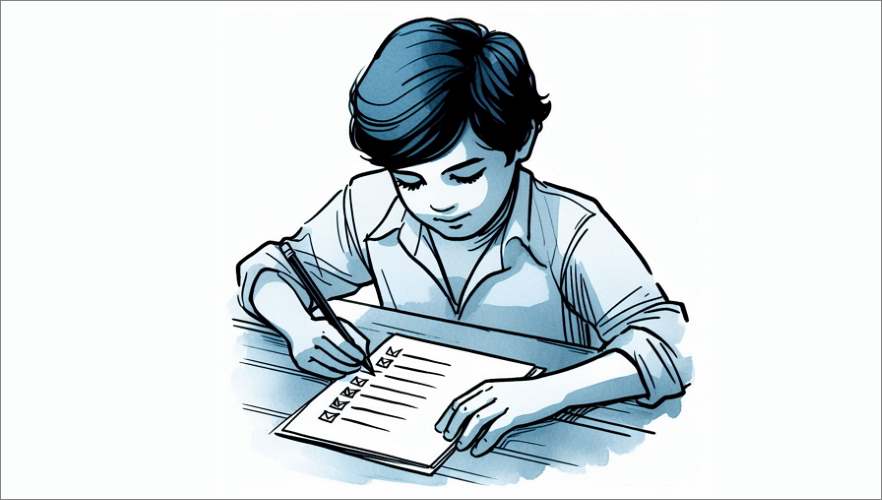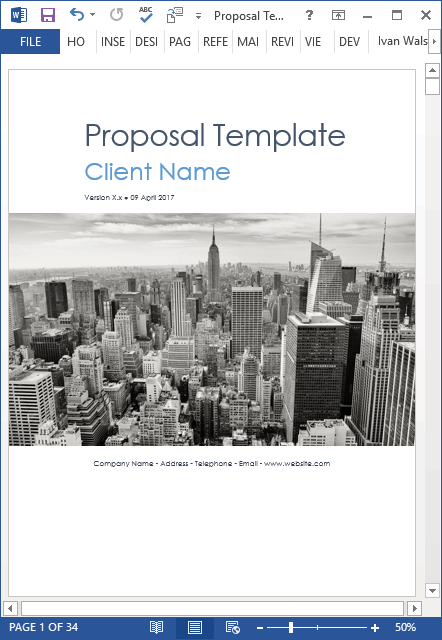Proposal Writing, Proposal Writing Tips
Proposal Writing Course – Lesson #1 How to Write Customer-Focused Proposals
Sean here from Klariti. In this updated proposal writing course, we’re going to start by looking at how you can write a more customer-focused proposal. Now, this might sound obvious but it can easy to miss the mark when you, and other contributors, are laser focussed (and maybe a little tunnel visioned) on promoting your product/services in the response.
So, before you start writing a ‘me’ focused proposal, let’s step back, study the ‘ask’ from the client’s point of view, so you can craft a response that zeroes in on their specific needs.
NB – Drafting a proposal that resonates with your client requires a shift in focus from your own achievements to their future, long-term goals.
Here are four strategies to make your proposal more customer-focused:
- Identify the Ask: Instead of fixating on your solutions, examine the client’s underlying problem. Understand why it’s crucial for them to address this issue at this moment in time and how it aligns with their objectives.
- Highlight Outcomes: What results matter to your prospective client? Structure your proposal to showcase how your response will meet their success metrics. By prioritizing their most important outcomes, you demonstrate your commitment to their goals.
- Think Long Term: Provide recommendations that align with the client’s specific needs. Show how your proposed solutions will not only address their current challenges but also position them for future success.
- Credentials: Back up your claims with evidence of your capabilities. You can use statistics, testimonials, or case studies to prove you can deliver on your promises and surpass their expectations.
As mentioned, by focusing on the prospect’s needs, outcomes, and objectives, you can shape proposals that increase your chances of winning their business.
Let’s look at the finer points.
How to Write Customer Focussed Proposals
For proposal writers, the task of responding to a Request for Proposal (RFP) can be quite daunting. In addition to the pressure of getting the best proposal in on time, defining an effective approach to the response poses several dilemmas.
[ Learn more about these Proposal Templates ]
For example, the various proposal team members may argue that their respective contribution is worth the most attention; the IT specialist will argue that the ‘solution’ is the heart of the response, while the Sales manager will wade in with a sharp sales pitch. Of course, they all have a valid point; but you need to assimilate each contribution into the final document from the customer’s perspective.
With the previous considerations in mind, you need to avoid a situation whereby the final proposal is bidder-centric, In other words, you have placed your solution at the heart of the bid.
From the customer’s perspective, these bids tend to come across as ME-ME-ME.
A more successful approach is to place the customer ‘smack dab in the middle’ of your response. Everything has to revolve around their needs, which, of course, is the way it should be.
Customer-centric proposals make you (i.e. the government contractor) feel that this is written for you in person; not written down at you.
Let’s see how we can write proposals that put the client at the center of the response.
To do this, you need to answer the following seven questions.
1. What is the main problem?
State their problem in one sentence. If you can’t do this, you haven’t understood their problem. There is no point writing anything until you get this clarified. Read the proposal again.
2. Why does this issue need to be resolved?
You need to look beyond the obvious, and ask yourself: what are the unstated reasons that are not covered in this proposal?
Every bidder will see the most obvious business drivers; they are in the RFP’s executive summary. Instead, dig a little deeper. Work out what are the three most likely reasons that they have produced this bid? For example, the proposal may be in response to new government legislation or a perceived competitive threat.
3. What goal needs to be accomplished?
In reality, the client will have several goals they need to accomplish.
One suggestion is to visit their website and download the most recent annual report. This will often outline the long-term objectives that they wish to achieve, e.g. business expansions, new product lines, references to competitive threats. Knowing this can give you an inside track into their strategic business drivers.
Once you understand these goals, you are responding from a position of strength which gives you an immense advantage over your competitors.
In general, there are three different goals to address:
- Business goals – These discuss how to increase productivity, become more efficient, streamline operations, automate business process, leverage product lines etc.
- Technical goals – Such as aligning business and technical processes, improving quality, product enhancements, utilizing emerging technologies.
- Strategic goals – These include issues such as HR strategies, building brand recognition, mandatory government legislation, marketing drives, and responding to public perception about the agencies product/services.
4. What has the highest priority?
Capture all the client’s issues and goals. Distill these goals down to the top five. You will probably notice that you can condense many smaller goals under one over-riding goal.
Rank the top five in order of priority; write your response based on that order.
5. What products or services can achieve these goals?
Once you know your top five goals, it is much easily to structure your response around these objectives.
Imagine writing a response without knowing what the top five goals were!
The challenge now is to blend their goals with your proposal. However, as you have a firm grasp of their true business needs, you should be in a much better position than your competitors.
6. What results could follow each of your recommendations?
Most proposals contain a series of recommendation that demonstrate an understanding of the client’s business requirements.
As well as making the recommendations (the easy part), you need to back them up with collateral that puts them into context, such as market research, survey, government statements.
Be very careful not to use absolute statements in your bid unless you’re certain you can stand over them. A proposal is a legally binding document!
Some areas worth covering include:
- The personnel who will implement the recommendations — why they are best qualified.
- How the recommendation(s) help the client attain their most important goals.
- Barriers to implementing the recommendations.
- Where you have successfully achieved this before.
- Costs involved in achieving these goals and the estimated project timeframes.
- What could happen if they avoid to act on these recommendations
7. How well does the proposal read?
Once you have finished the first draft put it aside for 24 hours. Then read it again—and aloud in a private room—from the perspective of the government agency.
If you stumble over sections when reading, note the location and plan a re-write.
When you are reading the proposal—from the agency perspective—ask yourself:
- Does their solution cover my long-term needs?
- Does it force something upon me that I don’t want?
- Does it ignore, or fudge, specific questions that we asked in the proposal?
- Is this a generic response or is it specific to my needs?
Always give yourself 24-48 hours to digest your response. You’d be amazed how different the proposal reads after getting some distance from it.
If you cringe when you read certain sections, then you are probably on the right track. At least you now have a chance to modify it before it hits the client’s desk.
PS: it’s always good practice to call the client after the contract award and ask them what they thought of your bid.
Though they can’t discuss confidential areas, they may made suggestions where your bid was weak or strong. Try to take this onboard in the best spirit and remember it for your next bid.
[ Learn more about these Proposal Templates ]



